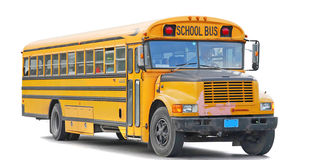Let’s all work together to create a safer school transport system
Sponsored content

By Evans Ongwae
Each weekday when school is in session, thousands of children ride school buses to and fro school. Naturally, parents worry about the safety of their children while sending them to school. Thus, along with the quality of education and better facilities, transport services have become a key consideration for parents when selecting a school for their children.
In this information age and era of Big Data, better use of technology and data can drive school transport to a whole new level. For example, can schools use mobile phones, geographical positioning system (GPS), and in-bus monitors, to assure the comfort and safety of the children – and even school staff – riding each bus daily?
Even Government agencies, especially the National Transport Safety Authority (NTSA), can use data to inform the public about accident-prone stretches of specific roads. Such information can be useful to school drivers and authorities in preventing accidents.
Unicef, in its publication, “Guidance for Safe and Healthy Journeys to School During the Covid-19 Pandemic and Beyond”, calls for use of “evidence-based low-cost infrastructure such as bollards, speed humps or raised crosswalks, and/or enforcement, such as placing speed cameras at locations that data have shown are prone to frequent collisions.”
The UN body urges drivers to “reduce speeds to 30km per hour or less. Higher speeds pose the greatest threat to children because of their small bodies and unpredictable behaviour.”
It adds that if permanent reduction is not possible, school bus drivers should reduce speeds during drop-off and pick-up. Unicef further calls for public education about speed reduction through school zone signs, pedestrian crossing signs, slow-down markings, and billboards.
A safer school transport system is the responsibility of diverse stakeholders, not just schools and parents, and it is in the interest of motor dealers to share with other stakeholders their research on how to improve the school transport system.
As time passes, more school buses join road traffic. The Kenya National Bureau of Statistics (KNBS) regularly conducts economic surveys. Its Economic Survey of 2022 revealed that the number of schools in the country is increasing significantly. In the 2021 school year, for instance, the total number of schools grew by 1.4 percent, while the number of registered pre-primary schools increased from 46,652 in 2020 to 46,671 in the same year. The growth, according to expert analysis, is even much wider among private schools. In essence, this growth and the advent of Junior High schools in Kenya’s school system, provides an opportunity to supply more buses for school transport.
These days, most schools have fleets of buses to provide pick-up and drop facilities to their students, and, in some cases, staff. Other schools could be planning to buy buses or vans. Generally, schools make all the necessary efforts to implement essential measures to ensure children’s safety, especially while travelling on school buses.
However, managing a fleet of school buses can be a major challenge, but using the right aids, school administrators can sleep easy knowing that they will not suffer unnecessary costs or total loss of a bus. The challenge is how to operate efficiently and deliver good service while dealing with driver turnover and rising costs. Without adequate care, school fleet assets can quickly become liabilities.
Fuel, insurance, maintenance and repair costs represent significant expenses to schools that own fleets of vehicles. However, with the right combination of ingenuity and prudence, it is possible to keep many of these costs in check.
It starts with the vehicle model or brand, where it may be necessary to lease or purchase new, more fuel-efficient vehicles. Schools can work closely with motor dealers to get just the right type of vans or buses that suit their situation. For example, would the needs of urban schools be different compared to those in rural areas?
Schools also enjoy savings through consistent vehicle maintenance. Well-maintained buses perform more efficiently than damaged or neglected ones.
Simple measures, such as proper tyre inflation as well as regular tune-ups, oil changes and fuel and air filter changes, all contribute significantly to optimal vehicle performance, thereby saving fuel and lessening the chance of costlier vehicle repairs.
Schools also need to consider whether they need to install monitoring cameras in each bus. These devices can help them monitor bus locations. Should drivers change bus routes without the approval of school administrators, the cameras can provide evidence.
Click here for a soft copy of a special supplement featuring specific school transport solutions being offered by industry stakeholders towards making the experience more comforting for parents and schools alike.


